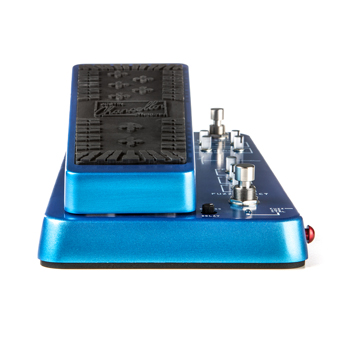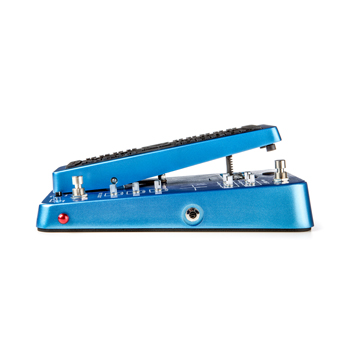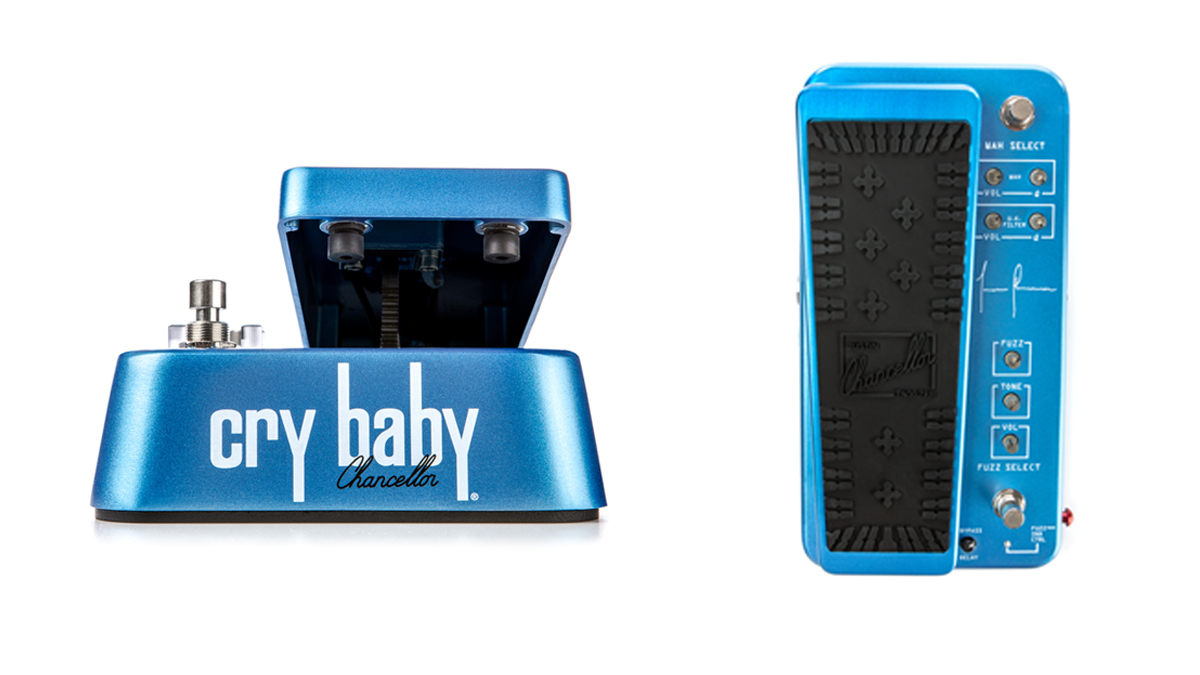Guitar World Verdict
Dunlop, and Chancellor, have pulled off a pretty spectacular trick here – this featured-loaded wah is the best signature bass product in some time.
Pros
- +
Three useful functions in one.
- +
Well-built.
- +
Footswitch toppers are even included.
Cons
- -
None.
You can trust Guitar World
Readers with keen memories may recall our review of Morley’s Cliff Burton Power Wah in 2015, in which we pointed out the advantages of combining fuzz and wah effects in a single heavy-duty pedal. Seven years later, we’re reminded of that thoroughly decent tribute to the late Burton with the arrival of this equally solid chunk of wah pedal: Tool bassist Justin Chancellor’s own signature Cry Baby.
Like its earlier competitor, the Chancellor unit packs a lot into a single chassis. In this case, our $300 of taxed income gets us two wah circuits and a fuzz, the latter of which can work independently or with one of the wah effects.
From the toe of the pedal rocker down, we have a footswitch that selects either wah, which are a standard effect and a variant labeled ‘UK Filter’ – any guesses where that one takes its inspiration? Then there’s a Volume and Q control for each wah, allowing you to tweak each effect and run different sounds.
Below that is the fuzz section, a highly adjustable effect with Fuzz – essentially, the intensity of the effect – plus Tone and Volume controls. Then there’s a side switch marked Fuzz Ind Ctrl, a little red knob that you tap sideways with your foot, allowing the fuzz to operate as a standalone overdrive with no wah involved.
When this knob is in Out position, you can use the rocker to add fuzz to your sound, varying from off to full depending on how far you depress it. Finally, there’s a small rotary Bypass Delay control, setting the length of time that the wah effect continues after you release the rocker.

Plug in, select a wah sound and step on the rocker, which feels heavy and smooth underfoot. You’re immediately rewarded with a range of tone options: the standard Cry Baby sound is indicated by a blue LED and is noticeably brighter, with less low end, than the more aggressive UK filter mode, which lights up with a yellow LED. The latter focuses more on doomy bass tones, and is generally less throaty and mids-heavy than the standard effect.
We really like both sounds, but the standard mode will suit modern, guitar-heavy bands better, thanks to its ability to cut through a little more. You can customize the two effects with the Q controls, which widen or narrow the bandwidth of the wah, and on that note the separate volume controls will be very useful when you’re switching between active and passive basses. Crucially, in both modes, the clean and effected bass tones are blended at the very beginning of the rocker sweep, making for a smooth onset of effect.
The Fuzz tone, indicated by a red LED – it’s a Christmas tree of a pedal, all right – is neither too shredded nor too smooth, at least to my ears. There’s plenty of modulation, fortunately, with Fuzz adding gain, Tone rolling off the brightness as you rotate it clockwise, and Volume allowing you to irritate your neighbors.

Combining wah and fuzz obviously leads to some demonic tones if you’re not careful, but then again, that’s the whole point, as Tool fans will know.
On a practical note, we’re very happy with the solidity of the pedal build. The weak spot in these units is always the rocker, understandably so given that it’s expected to take the weight of an amply nourished bassist for years on end, but this one feels pretty much invincible.
Dunlop have given this unit a flat bottom with no feet to contend with, making it easier to attach to a pedalboard, and they’ve also supplied a couple of extra footswitch toppers that increase the target size of the switches. These will come in useful on a dark stage, or indeed if your aim is ‘herbally challenged’.
Specs
- PRICE: $299.99 / £289
- MADE IN: USA
- FEATURES: Filter and wah effects, each with volume and Q controls; fuzz effect with volume and tone controls; selector for independent fuzz use; bypass/delay control
- POWER: 9v battery or AC adapter (not supplied)
- DIMENSIONS: W 5.3” x L 9.6” x H 3.7”
- WEIGHT: 3.1 lbs
- CONTACT: Jim Dunlop
Joel McIver was the Editor of Bass Player magazine from 2018 to 2022, having spent six years before that editing Bass Guitar magazine. A journalist with 25 years' experience in the music field, he's also the author of 35 books, a couple of bestsellers among them. He regularly appears on podcasts, radio and TV.
“The original Jordan Boss Tone was probably used by four out of five garage bands in the late ’60s”: Unpacking the gnarly magic of the Jordan Boss Tone – an actual guitar plug-in that delivers Dan Auerbach-approved fuzz
“This is a powerhouse of a stompbox that manages to keep things simple while offering endless inspiration”: Strymon EC-1 Single Head dTape Echo pedal review












